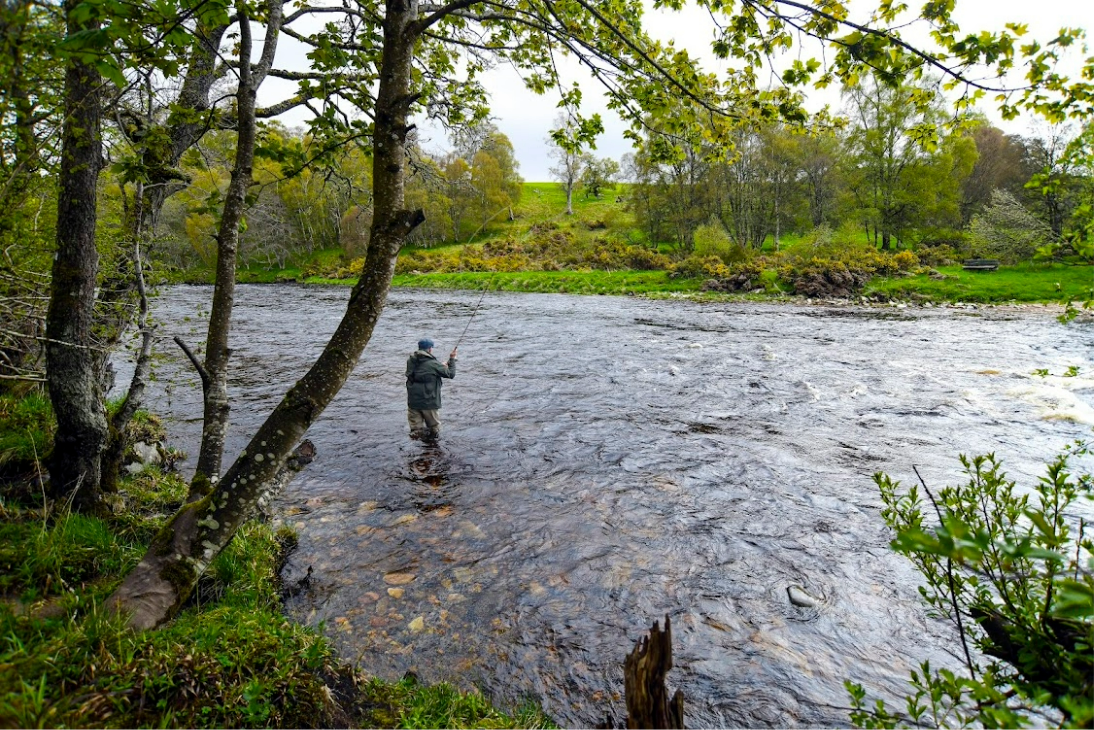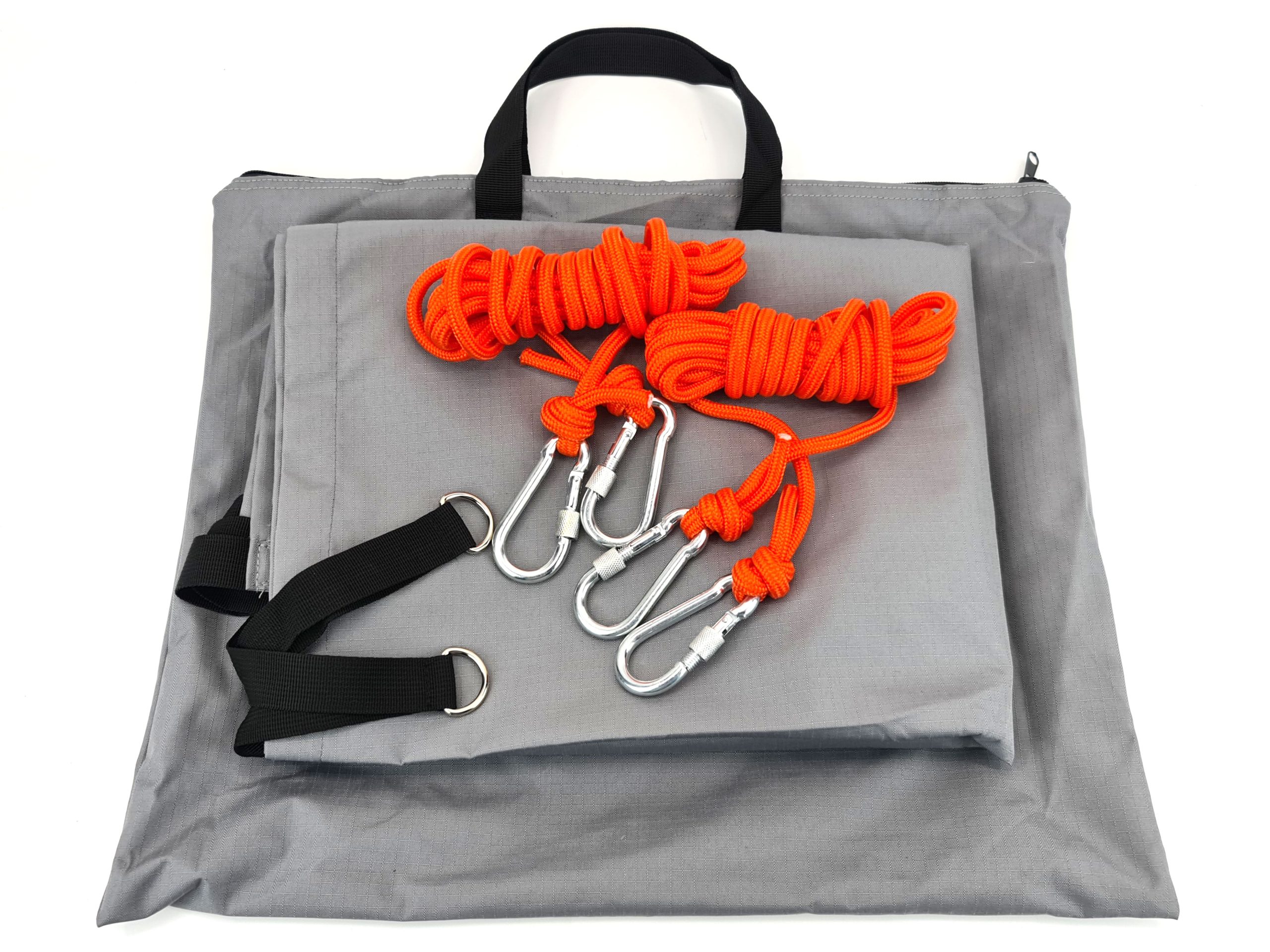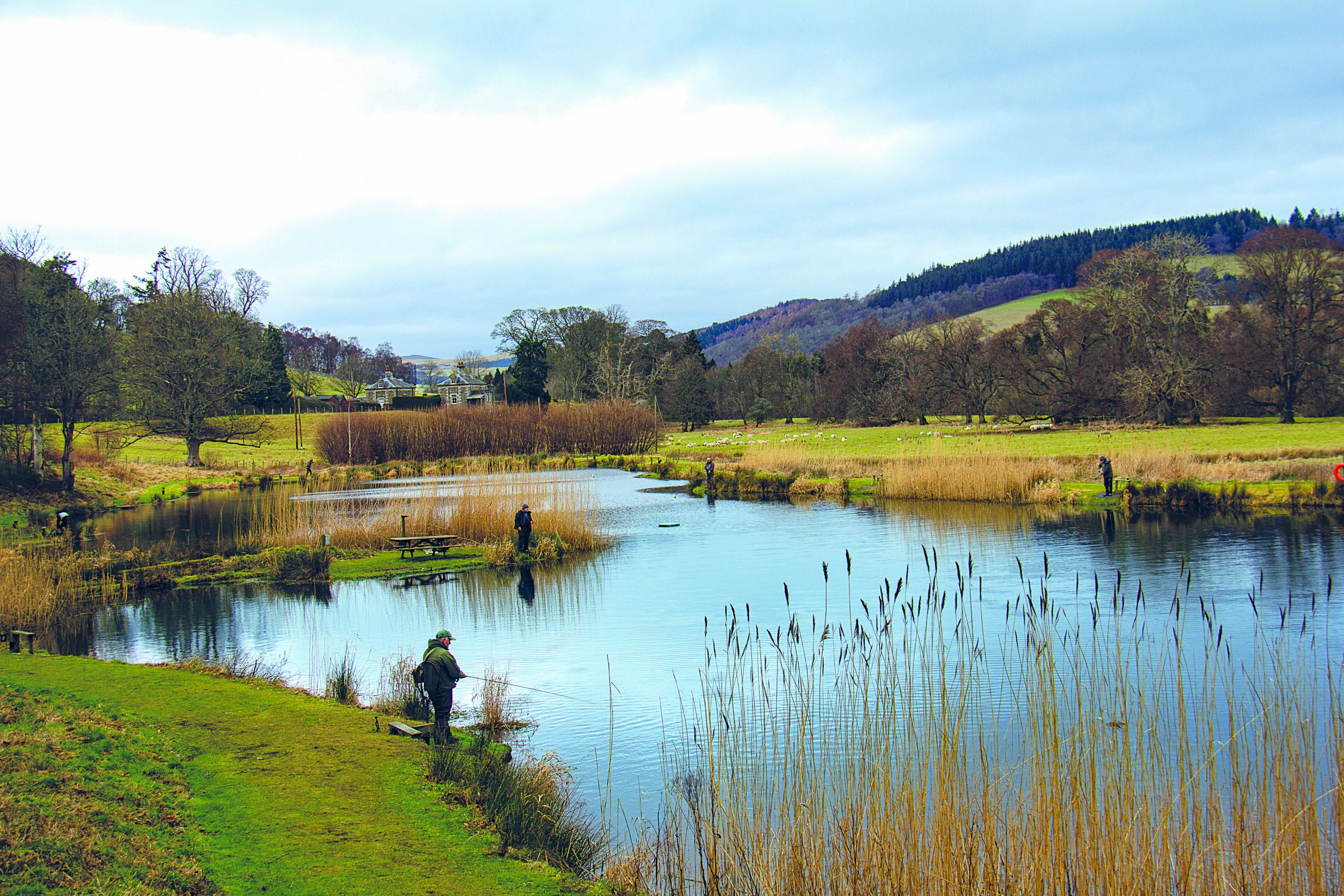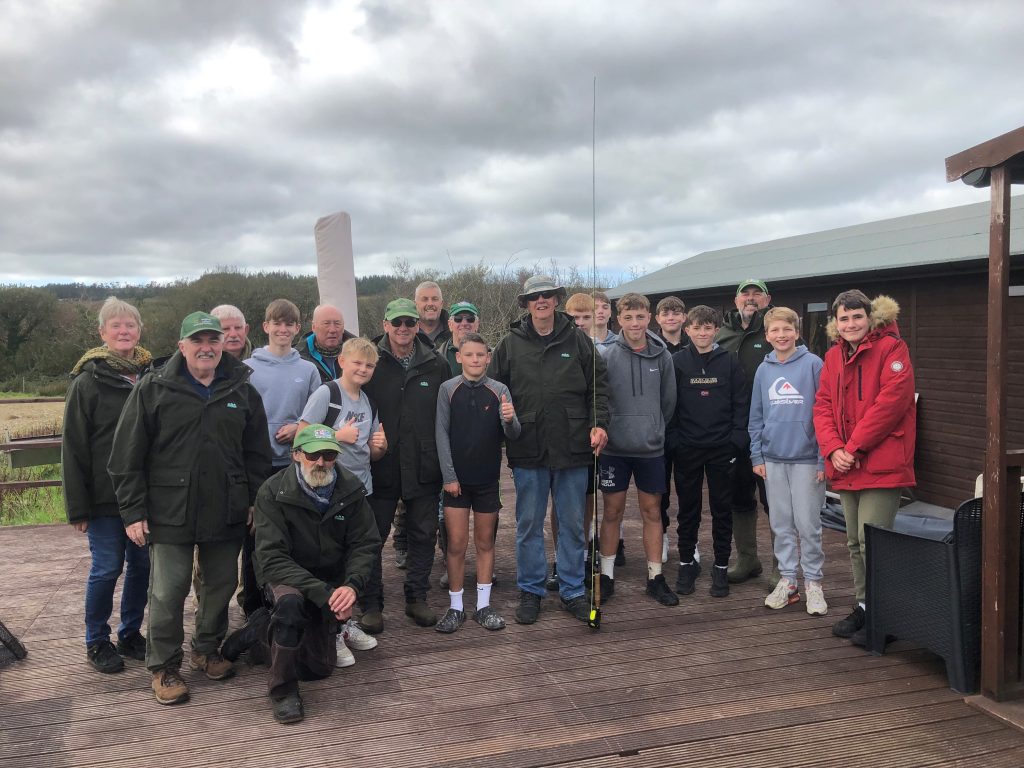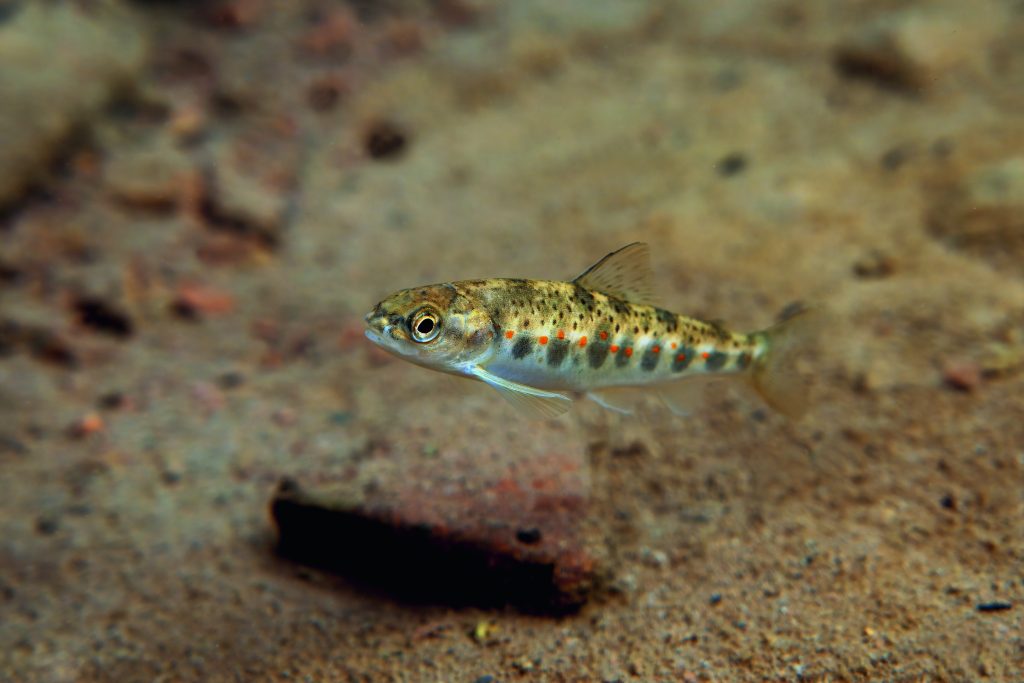HOW TO TIE THE G&H SEDGE RIVER FLY
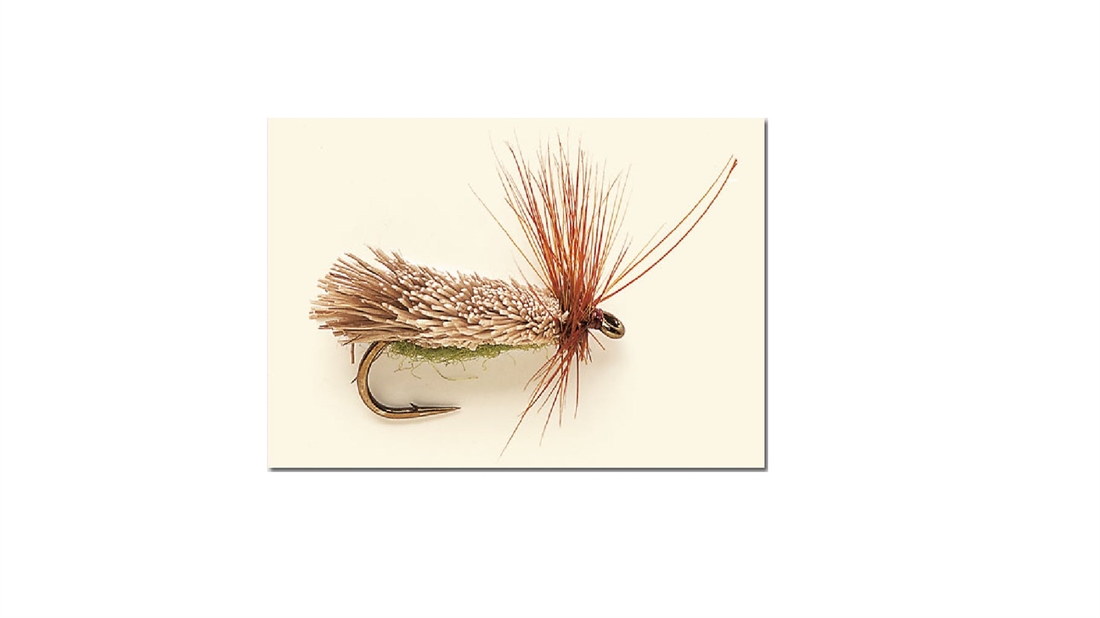
While the Suspender Buzzer, PVC Nymph and Persuader were all groundbreaking patterns which have withstood the test of time, the best known of all John Goddard’s many innovative flies has to be the G&H Sedge. Devised in conjunction with the late Cliff Henry — hence the G&H — the deer-hair-bodied dry-fly that floats like a cork is regarded as the premier sedge imitation in America where it is better known as the Goddard Caddis.
Their idea was to come up with a fly that, when seen from beneath, provided the distinctive wedge-shaped silhouette. Be sure to keep this feeding trigger in mind when shaving the ragged bundle of spun deerhair into its final shape.
Originally intended to represent the mottled sedge, by matching the size of the artificial to that of the hatching insect, the G&H can be used to represent any of the lighter sedges.
By substituting a dark-brown seal’s fur underbody for the original green and either black or dark brown deer hair for the underbody, the G&H can be adapted for use where brown or near-black sedges are plentiful.
Hook Sizes 8-12
Thread Green or tan
Underbody Green seal’s fur
Body Natural deer hair spun in
bunches and clipped to shape
Antennae (optional) Stripped
hackle stalks
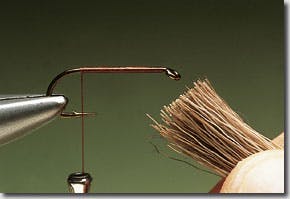
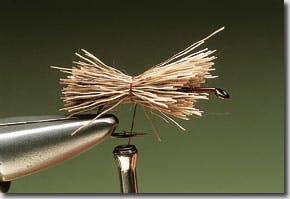
- Run the thread to a point just short of the barb. Snip a small bunch of fibres from a patch of natural deer hair.
- Make two loose turns of tying thread around the bundle of deer hair held in place on top of the hook shank.
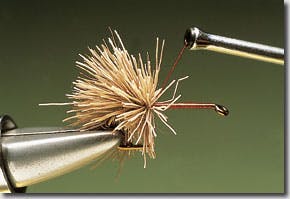
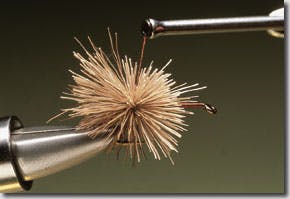
- Draw the thread tight and the hair will flare evenly around the hook.
- While easing the spun deer hair gently to the rear, secure the first bundle of deer hair with tight turns of thread
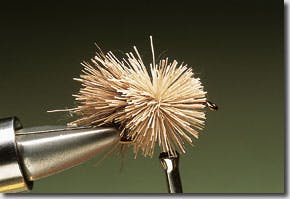
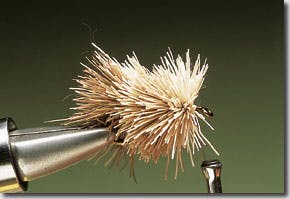
- Make a couple of turns of thread in front of the flared deer hair and repeat with a second bunch.
- Complete the body with a third bundle of deer hair. Prevent it from unwinding by making several tight turns of tying thread immediately in front of the spun deer hair.
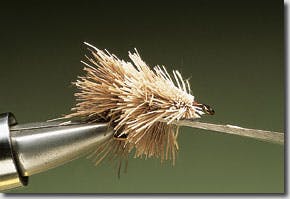
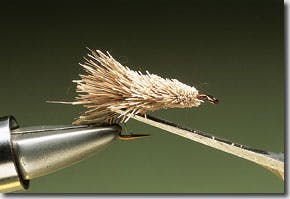
- Roughly brush the deer hair into shape and with sharp scissors and working towards the rear, begin to shear away the surplus fibres.
- Continue to shear away the fibres to leave a body that is roughly wedgeshaped above the shank and flat beneath.
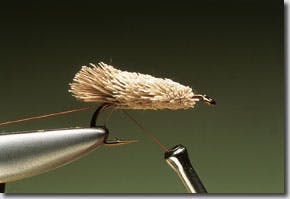
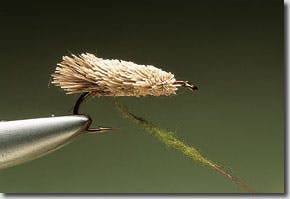
- Snip away any stray fibres and secure in a length of well-waxed tying thread.
- Trim away the unwanted thread and dub on a slender spindle of green seal’s fur.
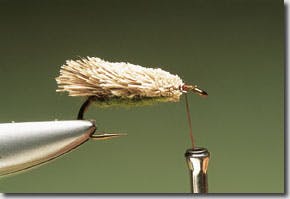
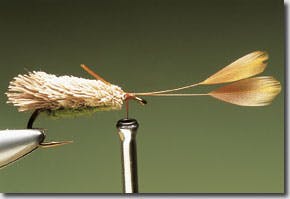
- Holding the dubbed thread tightly underneath the body secure it in with several tight turns of thread. Trim away the surplus dubbed thread and secure.
- Remove the fibres from a matched pair of hackles and tie in the stripped stalks which will represent the antennae.
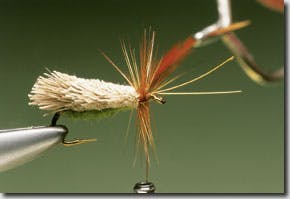
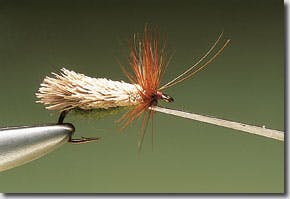
- Cut the antennae to length. Tie in the cock hackle and make three or four turns.
- Snip off the surplus hackle. Form a small, neat head and cast off with a whip finish. Complete the fly by trimming away all the hackle fibres from beneath the hook.

